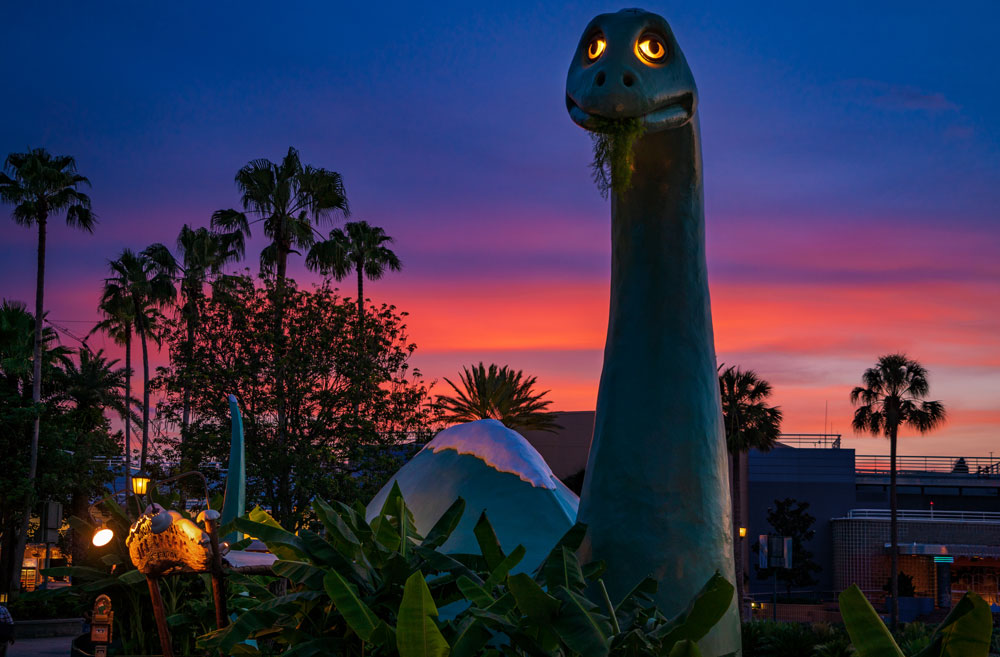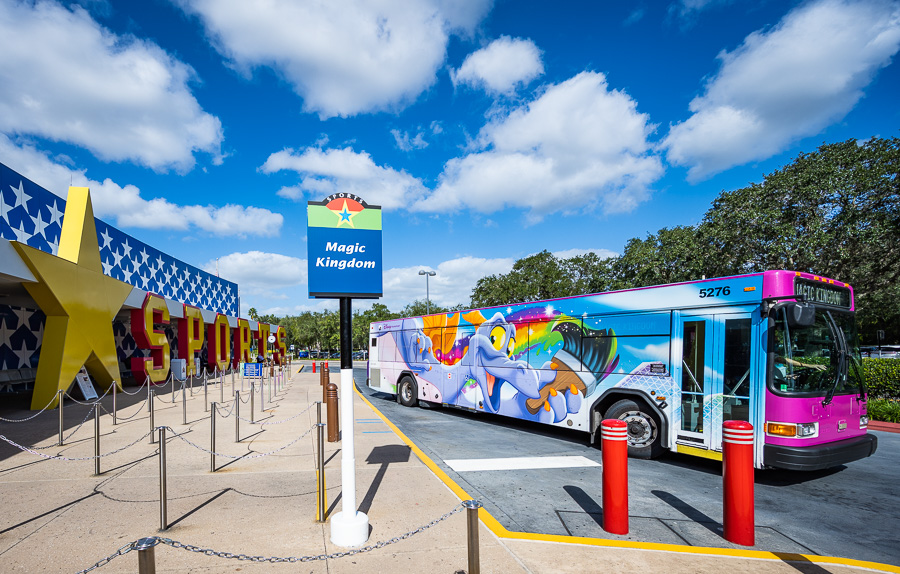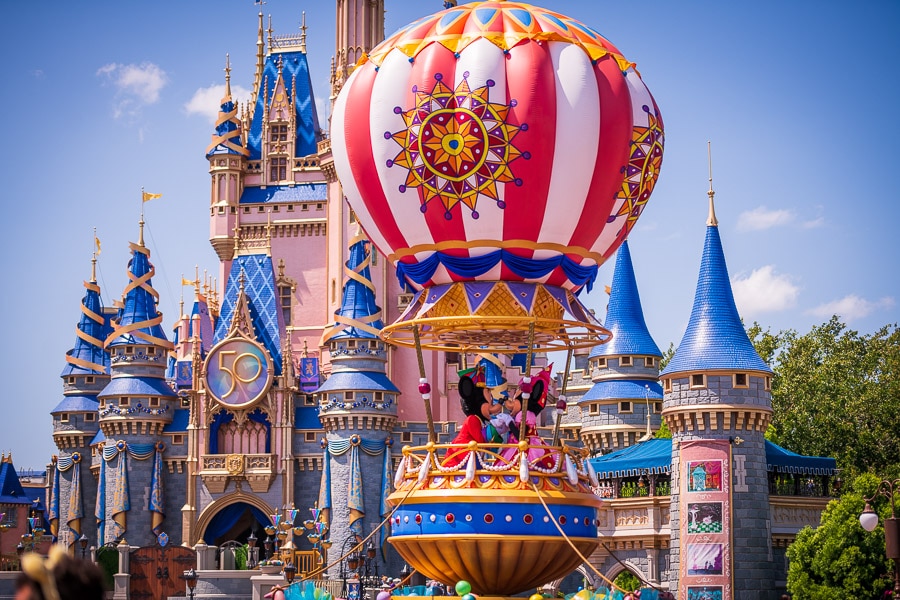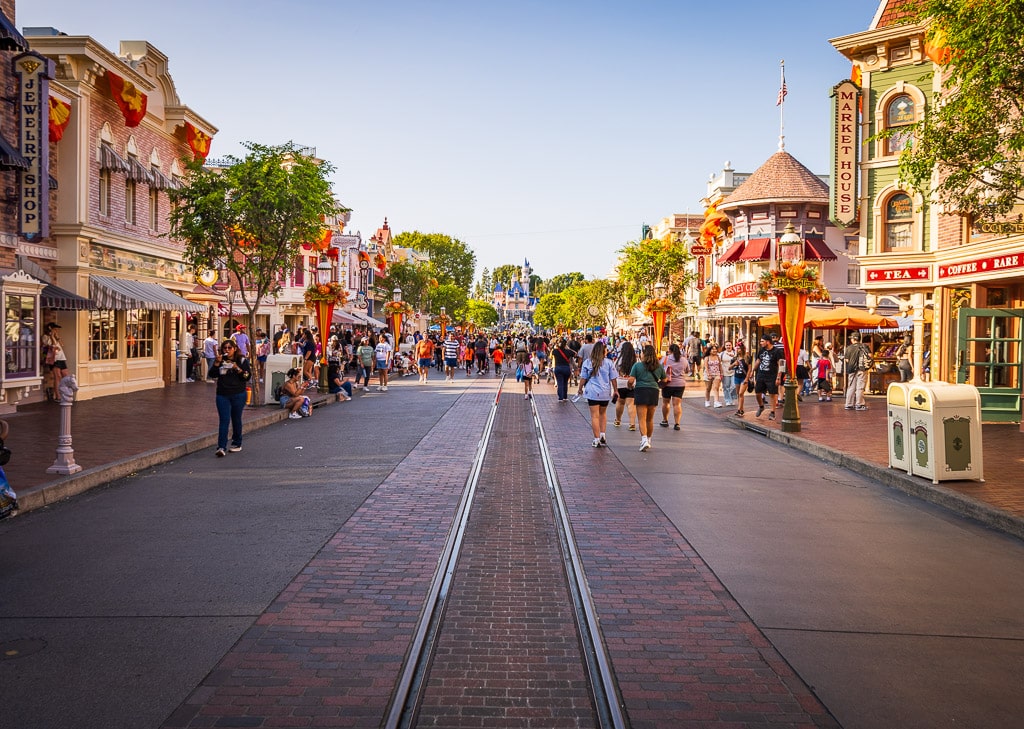
The exhaustion of pent-up demand at Walt Disney World has been a hot topic for months, with potential impacts to discounts, crowd levels, return of Dining Plan, and pullback on nickel & diming and price increases. Now, consumer spending is starting to slow and the engine of the U.S. economy is stalling. This post covers what’s happening in the bigger picture and what that means for Walt Disney World.
In part, this is not a new conversation. We published What Does Walt Disney World Do During a Recession? last summer when the country entered a technical recession. Even beyond that, every single new discount release has included discussion about pent-up demand fizzling out, inflation on necessities resulting in reductions to discretionary spending, and depleted household savings and rising debt levels.
Our prediction has been that consumers would return to being more cost-conscious and price sensitive, and things will normalize at Walt Disney World, as those dynamics play out. Our short and sweet answer as to what that means in this context is that Walt Disney World will end up offering better discounts, bringing back familiar fan favorites. What follows is the why of that, starting with the broader economic environment.
In short, consumer spending is sputtering. Retail sales fell 1.1% in December, reflecting tepid consumer demand even during the busy holiday shopping season. That wasn’t an isolated occurrence or anomaly–retail purchases have fallen in three of the past four months. That followed consecutive quarters during which retailers like Walmart and Target raised red flags about weaker forward-looking demand.
Spending on services was flat in December when adjusted for inflation, matching November. Services outlays were supported by housing and utilities, air travel, and recreation–as Americans cut spending at restaurants and bars. This resulted in the worst monthly reading in nearly a year. Consumers pushed back on price hikes in particular, which is a positive for fighting inflation.

This is a sharp contrast from the prior year-plus when Americans lifted the economy out of its pandemic downturn starting in the second half of 2020. That helped the United States avoid what many economists worried would be a prolonged recession, as consumer spending on goods–followed by services–fueled economic growth.
Even as inflation accelerated, Americans kept spending in the last year. Consumer spending strength was aided by government stimulus, flush savings accounts, and cheap credit. Despite four-decade-high inflation last year, consumers continued on undeterred. Americans actually outspent inflation–through the first 9 months of 2022, consumer spending growth exceeded price increases by about 2%.

That tides have turned, and spending is slowing while inflation remains elevated–in part because inflation is still running hot. In December, the share of monthly income Americans set aside for savings was only 3.4%, down from 7.5% a year earlier and from a record high in Spring 2020 when the savings rate spiked to over 30%. Back then, many Americans were stuck at home and not spending on travel, leisure, restaurants, or other services, bolstering that household savings rate to record levels.
For the sake of a more apples to apples comparison, the savings rate was 8.8% back in 2019. It has been below that for over a year at this point, and continues to decrease.

As the personal savings rate sank near an all-time low, credit card balances jumped 15% year over year, according to the latest quarterly report from the Federal Reserve Bank of New York. “With prices more than 8% higher than they were a year ago, it is perhaps unsurprising that balances are increasing,” Fed researchers wrote.
Credit card balances were up $38 billion from the previous quarter, the largest in more than twenty years. According to the Fed, the real test will be whether borrowers will be able to continue to make the payments on their credit cards. Already, delinquency rates have begun increasing–albeit from the unusually low levels during the pandemic as household savings soared (see above).
On top of this, fewer credit cardholders are paying off their balances in full each month. Approximately 46% now carry credit card debt from month to month, up from 39% last year.

The average credit card interest rate is now 19.6%, which is an all-time high. This comes after rising at the steepest annual pace ever, in step with the Federal Reserve’s interest rate hikes to combat inflation. Although the amount of rate hikes is likely to decelerate, this trend is unlikely to reverse anytime soon.
The Federal Reserve just raised the central bank’s benchmark rate, effective February 2, 2023. That brings the rate to between 4.5% and 4.75%, from near zero at the start of last year. The Fed’s borrowing rate is projected to rise another three-quarters of a percentage point over the course of 2023, hitting a 17-year high of between 5.00% and 5.25% by the end of the year. (Assuming no rate cuts later in the year, which some analysts are already forecasting in the second half.)
With the Federal Reserve’s commitment to keep raising its benchmark rate until progress is made in fighting inflation, credit card interest rates will easily be over 20% in the coming months. This will only exacerbate household debt levels and further reduce savings, especially if Americans continue having to spend more on necessities like groceries.

Consumer spending accounts for roughly 70% of the economy. A downshifting consumer is the key reason that economists put the probability of a recession in the next 12 months somewhere between 60% and 70%. However, many economists believe that the U.S. might avoid a recession entirely if spending patterns stabilize and the Fed is able to engineer a soft landing.
The increases are gradually slowing down consumer spending, but it might take months before the Fed’s goal of cooling the economy is fully realized. That’s because there’s some degree of lag between rate hikes and the curbing of economic activity and lowering inflation. Many investors think the lag is long, which is precisely why they predict the Fed will cut rates later this year and through 2024. These investors believe the Fed has already raised rates to levels likely to cause a recession.

There are other variables at play. Although unemployment is trending at a half-century low, big companies including Goldman Sachs, Microsoft, Meta/Facebook, Twitter, Netflix, Amazon, and motr have culled their workforces to cut costs. Layoffs aren’t the only means of reducing staffing–others, like Disney, have instituted hiring freezes or issued return to office mandates.
With that said, jobs have remained abundant and wages have continued to rise. Unemployment was only 3.5% in December, and hourly wages were up 4.6% year-over-year. Equally as important, there were are over 10 million unfilled jobs and more open positions than unemployed individuals, according to the Labor Department. Even with white collar layoffs, this dynamic is unlikely to change as Baby Boomers continue leaving the workforce.
That’s not to paint an overly-rosy picture of the labor market and employees’ strength. The Labor Department also reports signs of weakness, including employers dropping temporary workers following the holidays at a faster-than-normal rate, people who lose their jobs taking longer to find new ones, and the average number of hours worked a week declining for two straight months.

Additionally, tens of millions of Americans are set to start or resume making payments on student loans later this year. Payments have been frozen since March 2020, and are scheduled to begin again 60 days after litigation around debt cancellation is resolved or the program is implemented.
Many taxpayers will get smaller refunds when they file their returns in the coming months because Congress didn’t extend breaks put in place during the pandemic. Of particular relevance is the expiration of the enhanced child tax credit, which could have outsized impact on Walt Disney World’s core demographic of families with kids.

To that point, let’s turn to that–after all, this is a Disney blog and not Bloomberg. Let’s start with consumer spending, since that’s the crux of this conversation. The surge in savings plus subsequent stimulus and rise in consumer spending is in large part what drove the ~40% increases in per guest spending at Walt Disney World over the last year-plus.
One survey found many families are willing to put at least some of their Disney vacation on a credit card, with 18% of respondents stating that they went into debt to pay for their Walt Disney World vacation last year. Parents with children younger than 18 are the most likely to incur debt for Walt Disney World, at 30%.
The degree to which debt is incurred for Walt Disney World vacations is actually below average for all categories of spending. As a whole, approximately 35% of all U.S. adults carry credit card debt from month to month. While there’s a qualitative difference between incurring debt to buy necessities like eggs as opposed to luxuries like Starcruiser, it’s still somewhat surprising that the number is that low for Walt Disney World trips, specifically.

More than anything else, visitors under-budgeted for food costs when racking up debt at Disney. While many consumers expected to go incur credit card debt ahead of their Walt Disney World vacation, surprise expenses accounted for the bulk of that.
Respondents who’ve gone into debt to pay for Walt Disney World trips indicated that food & beverage costs were the category that was most likely to be more expensive than expected, at 56%. (This would certainly help explain the popularity of the Disney Dining Plan from a budgeting and predictability perspective!)
On a positive note, 71% of Walt Disney World visitors who went into debt say they don’t regret it. Moreover, 80% of those who took on debt to fund the vacation say they’ll pay it off in full in 6 months or less.

Interestingly, six-figure earners are more likely to go into Disney debt than any other income group. Of those earning $100,000 or more per year, 26% went into debt. Disney-goers earning between $35,000 and $49,999 were the least likely to go into debt, at just 12%. Most visitors reported saving for their trip, which should help explain-away this apparent discrepancy.
On a tangential note, other recent polling has shown that Americans with annual incomes at or below $75,000 are the most likely segment to visit Walt Disney World. Those making between $150,000 and $199,999 were least likely to show interest in a Disney vacation.

Time and time again, we’ve rebutted the common-but-erroneous notion that Walt Disney World is now “only for the wealthy.” To the contrary, the parks are reliant on the middle class, and that demographic being willing and able to spend the ever-increasing amount that a Walt Disney World vacation costs.
To be sure, there are wealthy Disney fans and casual visitors. However, there are not enough of them to fill the parks and resorts on a daily basis. It’s gotta be the middle class, splurging or going into debt. These consumers are literally the only way Walt Disney World can stay in business. The upper class cannot sustain the parks and resorts, and certainly are not the ones booking the tens of thousands of motel-style rooms with exterior hallways at the Moderate and Value Resorts.

Not that this makes the nonstop price increases any better, but there is a fundamental difference in attempting to price out the middle class versus attempting to extract more discretionary income from them. In the former case, the goal is to chase a different demographic; in the latter case, it’s to pursue the same one but pressure them to spend more.
This is significant for the purpose of this post because, if Walt Disney World were targeting the wealthy and ignoring the middle class, this entire discussion arguably would not matter. While the wealthy have undoubtedly taken hits to their investment portfolios during the last year, they are less likely to feel the squeeze of inflation or higher interest rates on credit cards. Their savings levels have fallen, but not to the point that they’re living paycheck-to-paycheck.

Regardless, sooner or later, something’s gotta give. Last year, the big trend was consumer spending shifting from goods to services. That has been evident in the aforementioned consumer spending numbers for several months. At first, that benefitted Walt Disney World, as it saw Americans making up for lost time and spending on hotels, airfare, dining, and other aspects of travel & leisure.
Now, the turning point is starting to come for the services industries, starting with restaurants. It’s likely travel won’t be far behind, and Walt Disney World is not somehow magically immune to economic conditions. As always, Disney charges what the market will bear. They don’t hold off on price increases as a nice gesture to guests. Conversely, the company cannot simply choose to charge more to “recoup” money lost during the closure.

When Disney increases prices, the company does so not at the rate of inflation or because its costs are increasing at a commensurate level, but because they can. When they offer discounts, it’s out of necessity, not corporate benevolence. Walt Disney World is an extremely savvy and sophisticated business—they maximize profits to the greatest degree economically feasible.
This likely explains why Walt Disney World already has more discounts for 2023 than were available at any single point last year. Walt Disney World has already released 5 discounts during 2023, which follows 4 discounts released last fall that run through March or April 2023. Most of these were released earlier than normal by historical standards, and offer better savings than their counterparts from the last two years. (See All Current Walt Disney World Discounts for Winter to Fall 2023 for specifics.)

Ultimately, it’ll be interesting to see how all of this plays out at Walt Disney World. The above survey data paints a clear picture of visitors to the parks as being primarily middle to upper middle class Americans who save or go into debt to fund their visit. Given the rapid drawdown of household savings coupled with the simultaneous increase in credit card debt, there’s going to be an impact sooner or later.
The open questions are still ones of timing and the degree to which Walt Disney World is able to mitigate. Just like with the broader economy, there’s a lag between when people book vacations and actually travel, so a slowdown in spending on services in March or April 2023 (for example) may not be felt at Walt Disney World until Fall 2023.
It’s also possible that the company is already getting ahead of this with the current round of improved special offers, and rather than attendance falling, effective prices will be adjusted downwards (via discounting–not outright price cuts) to entice more people to visit. Beyond that, there are even more levers that Disney can pull, resuming Annual Pass sales, bringing back the Disney Dining Plan, or other perks (bringing back free resort parking, for example) that incentivize bookings as consumers become more cost-conscious and price sensitive. Already, we’re starting to see this–hopefully, that’s just the beginning as Walt Disney World turns a corner from trying to squeeze every penny out of guests to offering better value for money in an attempt to compete for consumers’ limited discretionary spending.
Planning a Walt Disney World trip? Learn about hotels on our Walt Disney World Hotels Reviews page. For where to eat, read our Walt Disney World Restaurant Reviews. To save money on tickets or determine which type to buy, read our Tips for Saving Money on Walt Disney World Tickets post. Our What to Pack for Disney Trips post takes a unique look at clever items to take. For what to do and when to do it, our Walt Disney World Ride Guides will help. For comprehensive advice, the best place to start is our Walt Disney World Trip Planning Guide for everything you need to know!
Your Thoughts
How do you think the consumer spending slowdown, rising credit card debt, and reduced household savings will impact Walt Disney World, if at all? Do you think Walt Disney World’s prices will rise or fall as interest rates continue to increase in 2023? Are you anticipating discounts on hotels, tickets, or dining if the United States enters a full-blown recession? Will you be ready to pounce on deals–or will you wait for more? Do you agree or disagree with our commentary? Any questions we can help you answer? Hearing your feedback–even when you disagree with us–is both interesting to us and helpful to other readers, so please share your thoughts below in the comments!





